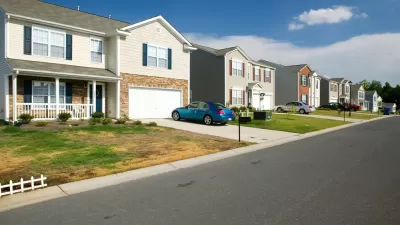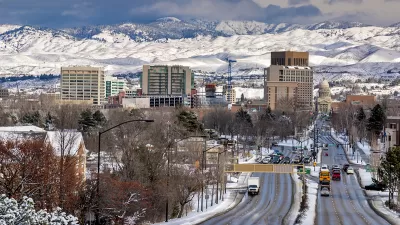It's hard to describe the current trends in the housing market as a "boom," though homebuying costs are surely rising.

"America has a record-low number of homes available for sale — just 1.03 million," writes Felix Salmon, citing data from the National Association of Realtors, to explain the roots of the current "housing boom."
Salmon's point throughout this article is that this housing boom isn't like previous booms: "It's a discouraging scene: Bidding wars, soaring prices, and fears that homeownership is becoming out of reach for millions of Americans. We're in a housing frenzy, driven by a massive shortage of inventory — and no one seems to be happy about it."
The numbers also agree: the 1.03 million homes available amount to only a fraction of the homes available for sale during the last housing boom in July 2007, when 4 million homes were for sale.
National Association of Realtors chief economist Lawrence Yun is quoted in the article saying this "is not a bubble. It is simply lack of supply."
There are other forces at work, however, Salmon lists "continued low mortgage rates, a pandemic-era construction slowdown, a desire for more space as people work increasingly from home, and a stock market driven increase in money available for downpayment" as causes of the rising cost of housing in the United States. There's also a rise of large corporate buyers in the market.
Salmon also offers a list of good news, losers, and a few potential outcomes for the "housing boom" of the pandemic.
FULL STORY: The dispiriting housing boom

Planetizen Federal Action Tracker
A weekly monitor of how Trump’s orders and actions are impacting planners and planning in America.

Congressman Proposes Bill to Rename DC Metro “Trump Train”
The Make Autorail Great Again Act would withhold federal funding to the system until the Washington Metropolitan Area Transit Authority (WMATA), rebrands as the Washington Metropolitan Authority for Greater Access (WMAGA).

The Simple Legislative Tool Transforming Vacant Downtowns
In California, Michigan and Georgia, an easy win is bringing dollars — and delight — back to city centers.

The States Losing Rural Delivery Rooms at an Alarming Pace
In some states, as few as 9% of rural hospitals still deliver babies. As a result, rising pre-term births, no adequate pre-term care and harrowing close calls are a growing reality.

The Small South Asian Republic Going all in on EVs
Thanks to one simple policy change less than five years ago, 65% of new cars in this Himalayan country are now electric.

DC Backpedals on Bike Lane Protection, Swaps Barriers for Paint
Citing aesthetic concerns, the city is removing the concrete barriers and flexposts that once separated Arizona Avenue cyclists from motor vehicles.
Urban Design for Planners 1: Software Tools
This six-course series explores essential urban design concepts using open source software and equips planners with the tools they need to participate fully in the urban design process.
Planning for Universal Design
Learn the tools for implementing Universal Design in planning regulations.
Smith Gee Studio
City of Charlotte
City of Camden Redevelopment Agency
City of Astoria
Transportation Research & Education Center (TREC) at Portland State University
US High Speed Rail Association
City of Camden Redevelopment Agency
Municipality of Princeton (NJ)





























